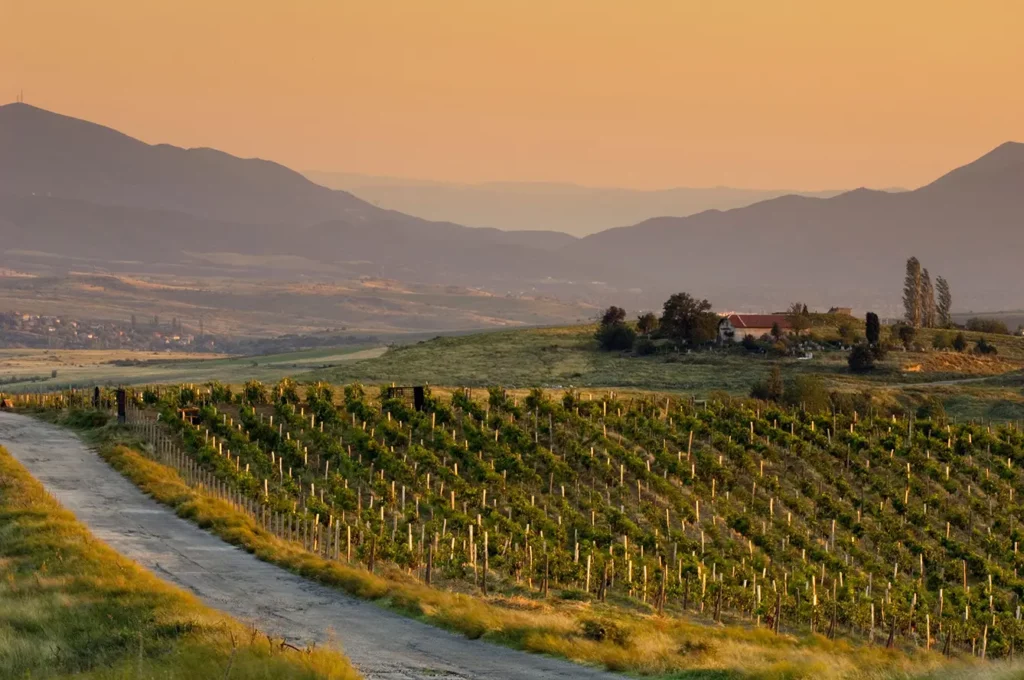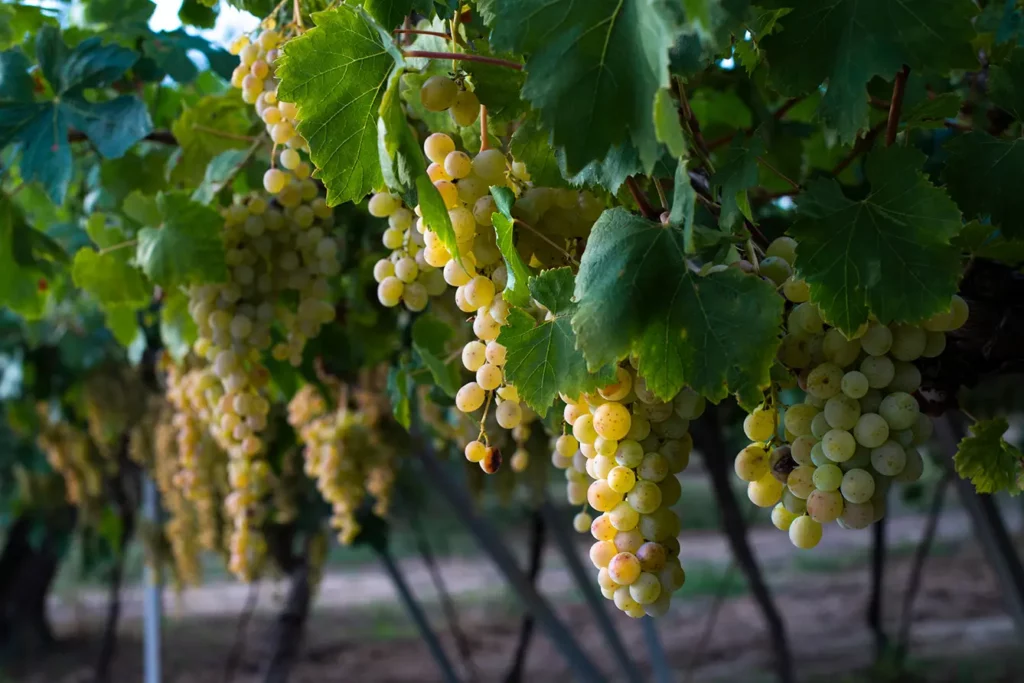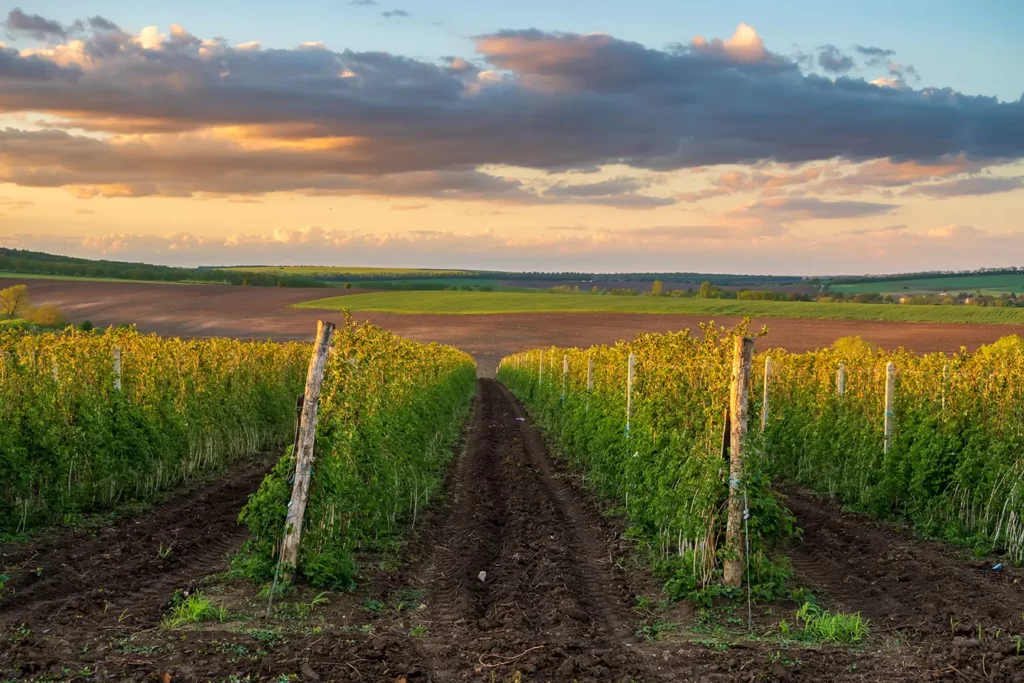Coincidence or not, February 14, aka Valentine’s Day, in Bulgaria, marks another saint and important holiday: the celebration of St. Tryphon, the patron saint of gardeners and winegrowers. Winemaking in Bulgaria dates back some 4,000 years B.C. Wine, especially revered by the Thracians who inhabited these lands as far back as 8,000 years B.C., never lost its luster.
Bulgaria’s wine regions
Bulgaria, divided in the years of communism into five viticultural regions, was among the five largest wine exporters in the 1980s, mainly due to export to the USSR. In the following decades, winemaking in Bulgaria took a massive hit, but things are looking up. For over a decade, both small and larger producers have been upping their game and bringing higher-quality wines to the table. These distinctively Bulgarian grapes will undoubtedly make your stay more pleasant.



Mavrud
This famous red grape can be spotted mainly in southern Bulgaria and along the Black Sea coast. The Mavrud wine, perfect when aged in oak barrels, is heavy and dense, with a deep ruby color. Its name comes from the Greek word μαύρος, meaning black. The wine’s memorable aroma has hints of blackberry and ripe mulberry.
The legend has it that Khan Krum, who ruled Bulgarian lands from 803 to 814, uprooted all the vineyards. But one poor widow kept a grape plant in her yard, despite the orders. The woman used the fermented grape juice to feed her baby. The baby grew up to be a remarkably strong man, joining the Khan’s army. The legend continues that in one battle, the soldier almost captured the Byzantine emperor. The Khan enquired about the soldier’s magic drink, which was credited for his braveness, and a bottle of fermented grape juice was presented to the ruler. Soon enough, the Khan ordered the vineyards to be replanted with the soldier’s mom grape. The soldier’s name? Mavrud, of course.
Wines of Melnik
Many of the best wine action is taking place around Melnik, Bulgaria’s smallest town located in the country’s southwesternmost corner. Blessed with a mild climate and excellent soil, the area around the Struma river is home to a few unique red grapes. With the aroma of ripe cherries and herbs, the wines of Melnik made a splash, first among the Christian subjects of the Ottoman Empire and later, according to a famous story, on the table of one Winston Churchill. The British statesman liked his Melnik wines so much, the story goes that he would order 500 liters to be delivered to him every year.
The local grapes – Shiroka Melnishka Loza, the more popular Melnik 55, and a crossover with the famous Georgian Saperavi grape – are so attached to the area that attempts to grow them in other parts of Bulgaria so far haven’t yielded any results worth communicating.
Keratsuda
Drop the name of this Bulgarian white grape if you really want to impress a Bulgarian sommelier. Grown in the valley of Struma Valley and benefiting from the area’s Mediterranean climate, the Keratsuda is a known but very rare grape. Today, very few plantations of this grape variety remain, making finding a bottle of pure Keratsuda wine a real challenge. You have a higher chance of spotting Keratsuda in a blend with another grape.
Gergana
Gergana, a popular women’s name in Bulgaria, is a white grape with a fruity aroma. Another extremely rare grape, Gergana, has recently seen a comeback, brought back partly by nostalgia and partly by an interest in uncommon grapes. The large and sweet grapes ripen in the second half of September, eventually becoming a clear wine with a light-yellow color. While you won’t be able to find a bottle of Gergana in your local supermarket, do ask for it whenever you find yourself among people in the know.
Dimyat
To make things easier, we’re also throwing in one of the most typical Bulgarian white grapes. Grown also in neighboring countries, the Dimyat is a staple, especially in northeastern Bulgaria. The wines from this grape are fruity, with touches of ripe peach. More of an everyday dessert wine, the Dimyat is probably better consumed in the hot summer, not aged, but on the go. And if you want a story to go with it, here we go. The legend has it that the Dimyat was originally grown in Egypt by the delta of the Nile and brought to these lands by the Crusaders. And while the latter is a thing of the past, the Dimyat is still here. Nazdrave!







